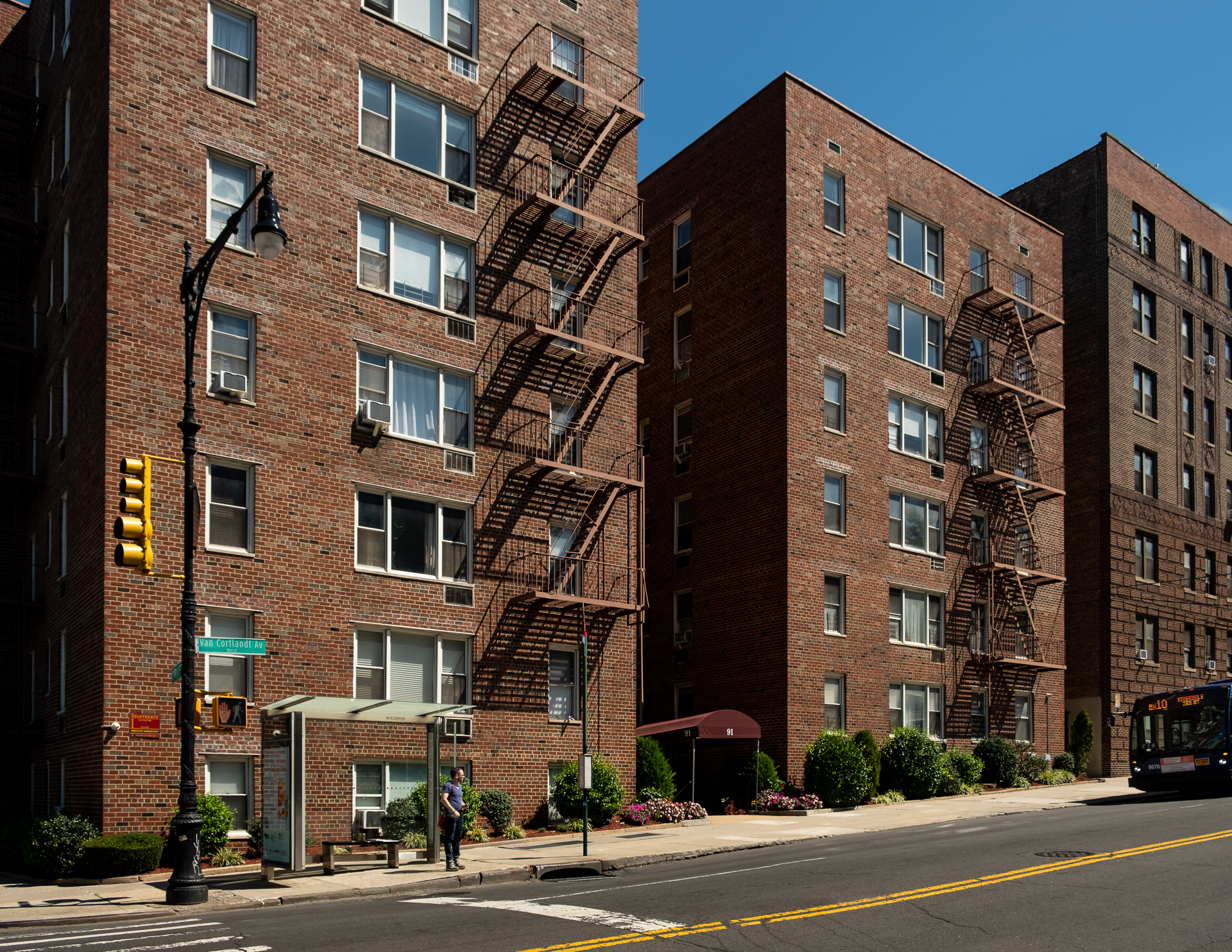The city’s housing vacancy rate plunged to 1.41 percent in 2023, the lowest it has been since 1968, officials announced Thursday. Options were particularly scarce for low-income New Yorkers: just 0.39 percent of units renting for under $1,100 were available last year.

Adi Talwar
A rent stabilized building on Van Cortlandt Avenue in the Bronx.Lea la versión en español aquí
New York City renters last year faced their toughest competition in decades: just 1.41 percent of apartments across the five boroughs were available in 2023, according to the initial results of the NYC Housing and Vacancy Survey unveiled Thursday.
That’s down from 4.5 percent in 2021, the last time the survey was conducted, and the lowest it has been since 1968—underscoring the severity of the city’s housing shortage and the need to build, City Hall officials said.
“The data is clear: the demand to live in our city is far outpacing our ability to build housing,” Mayor Eric Adams said in a statement accompanying the new numbers.
The survey, conducted with the U.S. Census Bureau roughly every three years—the last one was delayed because of COVID-19—aims to take stock of the city’s housing market. It’s used to gauge the need for rent stabilization, which remains in place unless the vacancy rate jumps above 5 percent.
There was no risk of that last year: while the city’s net housing stock increased by around 60,000 homes, its population grew by 275,000 households, according to the survey. The number of apartments open to renters citywide was around 33,000, what the administration called a “profound scarcity.”
Options were particularly scarce for low-income tenants: just 0.39 percent of homes renting for under $1,100 were vacant and available. The vacancy rate for apartments priced at $1,100 – $1,649 a month was just under 1 percent, while 3.39 percent of rentals on the higher end of the spectrum—$2,400 or more—were up for grabs. That’s a big drop from 2021, when the vacancy rate for units above $2,300 was 12.64 percent.
The number of apartments that were vacant but unavailable for rent—attributable to a number of reasons, like needed renovations, because they're used as second homes or are in between renters—decreased by 35 percent since 2021, when there were 353,400 such units, according to the survey.
Officials said the new numbers add urgency to the administration's efforts to ramp up housing production, which saw a boost in the most recent fiscal year after dropping significantly the year before. In a press release accompanying the survey results, the mayor reiterated his calls for Albany to approve a tax break for affordable housing developers and amend zoning laws to make it easier to build more residential homes, and touted his "City of Yes" plan to increase density citywide.
A significant number of New Yorkers continue to be "rent burdened"—meaning they spend more than 30 percent of their income on rent. Of households that earn less than $50,000 a year that didn't receive rental assistance, 86 percent met that qualification last year, the survey found.
The number of people in city homeless shelters is at an all-time high, with approximately 150,000 people staying in the sprawling system last month.
The administration is also currently embroiled in a dispute with City Councilmembers over its refusal to implement a package of laws that would expand eligibility for its rental voucher program—what City Hall says would be too costly and increase competition for existing voucher holders, but which supporters say would help more low-income New Yorkers find and keep homes.
The data in the vacancy survey was based on about 10,000 interviews with residents, building owners and other stakeholders across different housing types between January and June 2023, officials said.
To reach the reporter behind this story, contact Jeanmarie@citylimits.flywheelstaging.com.








